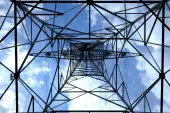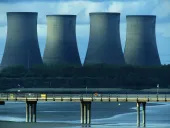A riddle wrapped up in an enigma— Why can't Indonesia get the power sector right?
By Melissa BrownWinston Churchill is famous for many reasons, one of which was his remarkable facility with the English language. Churchill’s pithy phrase about the power of mis-direction is worth keeping in mind for any analyst of the Indonesian power sector.
Whilst global investors are working overtime to track the advance of clean energy in global markets, the Indonesian power market is an oasis of calm. This is the market to watch if you like watching a power company resolutely hold to an old-fashioned fossil fuel narrative despite the fact the numbers don’t add up.
As 2018 comes to a close, it is worth conducting a brisk post-mortem on financially stressed PLN’s performance as a way of preparing for what promises to be a make-or-break year for the company in 2019.
When the hole gets too big, stop digging!
One of the things that is notable about the Ministry of Energy and Resources’ (MEMR) planning strategies is that optimism always prevails. Whilst the rest of the world is busy running scenarios that can capture the impact of radically lower costs from new renewables technologies, the annual RUPTL confidently presents a picture of the future that is curiously like the coal-filled past.
The impact of this conflict with reality is now playing out in very real financial terms that should be worrying investors and developers. Since the beginning of 2018, PLN has begun to lurch toward financial distress as its massive operating losses raise questions about the how PLN can afford its growing reliance on a new fleet of USD financed coal IPPs. After recording an operating income loss of $2.7b in 2017, in the first half of 2018 PLN staggered under a worsening FX climate and saw its operating loss rise nearly 40% year-over-year—a trend that will only accelerate thanks to adverse FX moves and higher IPP capacity payments.
Conventional wisdom says that PLN’s financial black hole doesn’t matter that much because the company is back-stopped by the sovereign credit which remains in good standing. But that is too optimistic a reading of S&P’s recent review of PLN.
In their late August commentary, S&P specifically stated that their outlook rests on “Greater confidence in the government’s oversight and supervision of PLN and its financial obligations.” They are also counting on more coordination between various ministries, presumably to create some breathing room for the Ministry of Finance to focus on stabilising the national balance sheet.
Following ratings logic
This sounds like conventional ratings agency logic, but the reality is a little different—and observers of Indonesia’s power sector should be on alert. MEMR followed up on S&P’s hope for more “oversight” by announcing that roughly 42% of planned new capacity would be put on hold to keep PLN’s near-term losses and cash requirements in check. This prudent step was exactly what PLN’s bond investors should have hoped for.
Unfortunately, this improved narrative has already begun to unravel. It seems that MEMR may have failed to coordinate with PLN or they both misjudged the pushback that would result. Either way, the market has been treated to a hasty climb down as the delay numbers have now been cut twice via confusing MEMR presentations.
How big is the reality gap? Based on IEEFA estimates, what was once expected to be a delay of 15.2GW of new capacity is now expected to be a delay of only 8.8GW. This reduces an impressive sounding 42% deferral to a decent, but not game-changing, capacity delay of 24%. With luck, this will take pressure off of near-term capex and funding requirements although no estimates have been released.
Perhaps more concerning is what MEMR is saying about why they got the numbers wrong. The biggest chunk of capacity that has been placed back on track relates to 1.9 GW that has associated take-or-pay fuel agreements that have already been signed.
This is exactly the type of project that regional Finance Ministers, Central Bank governors, and ratings agencies are now concerned about. Payment obligations with FX exposure that are tied to fixed rather than actual offtake impose long tail financial risks that most governments are keen to shed as power sector assets are repriced by new technology options.
Reform with Indonesian characteristics
So, what should market participants expect from MEMR and PLN in the coming months? We expect the political calendar to shape developments for the Indonesia power sector in the months to come. The April 2019 presidential election, along with global economic trends, will define what’s possible for PLN in 2019.
What seems certain is that PLN will urgently require a tariff increase. Indonesia’s credit standing rests on steady improvements in the country’s fiscal position. Although the PLN tariff freeze has been a political winner, it’s not sustainable in the face of growing demands on the Indonesian Treasury.
This leads us to expect that once the dust settles after the election that it may be time for a re-assessment of PLN’s development plan. In most countries, to make a meaningful tariff increase palatable, a new approach to the growth of the power sector would be required.
Real reform which could position Indonesia to benefit from the many innovations sweeping global power markets is not yet obviously on the cards. Positive interim steps would include a truly credible go-slow strategy on new coal IPP commitments paired with the type of international auctions that can deliver industrial scale renewables at the most competitive prices. At a minimum, this would permit Indonesia to begin reducing the financial risks associated with coal lock-in—a step that would certainly benefit the next generation of Indonesians.
If Winston Churchill were still alive, he would embrace this sentiment. After all his original quote was: “I cannot forecast to you the action of Russia. It is a riddle, wrapped in a mystery, inside an enigma; but perhaps there is a key. That key is Russian national interest.”




















 Advertise
Advertise







